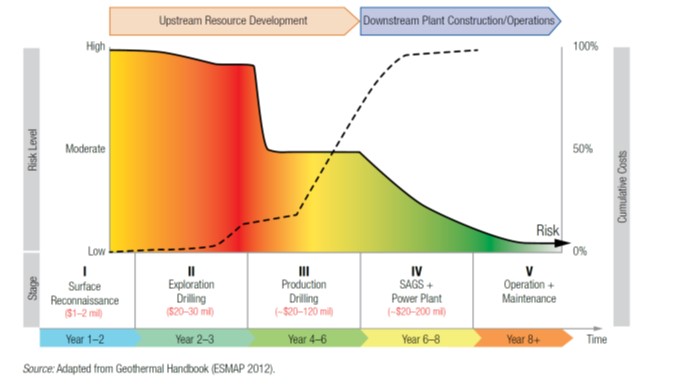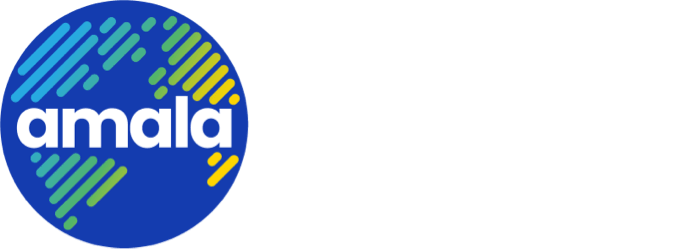Geothermal investments face several risks that stymie the development of the technology. They include uncertainty associated with the geothermal resource, the high up-front cost of financing, and its limited global scale that makes it challenging to generate competition in procurement to drive down costs. Developers are also confronted with other challenges that permeate especially in developing countries such as power market and offtaker risks and limited human resource capacity, which can further challenge investment mobilization. Overcoming geothermal resource risks is essential to unlocking geothermal power generation because much of the unexploited potential is located in green (new) fields. A comparative assessment surveying the various ways through which geothermal is developed presents perspective into different approaches to risk mitigation, which provides lessons for informing future exploitation.

The key messages from the global survey are as follows:
- A significant proportion of developed geothermal operations were through the public sector, by government or government-backed entities, which are able to take on the significant resource risks.
- In other instances, arrangements for cost-shared drilling between the government and private sector has also leveraged public resources to mobilize private funds. This was primarily undertaken in two ways:
- (i) government-led exploration and resource confirmation is conducted before the development rights are transferred to the private sector to complete and operate the now reduced-risk project, and
- (ii) the private sector is responsible for developing all stages of a geothermal project, but the government shares the cost of the high risk exploration stage to shift some of the risks away from the developer.
- Geothermal resource risk insurance seeks to pool exploration risks across a portfolio of development projects by insuring the productivity of a well prior to drilling, where some or all of the losses would be covered if certain pre-specified goals are not achieved. To date, only a few tens of megawatts of installed capacity have been developed through this mechanism primarily due to the fact that geothermal, being a globally small sector, provides limited opportunities to widely pool risks. Also, the high degree of uncertainty during the exploration stage drilling makes the insurance premiums high and thus often unaffordable for developers.
- Fiscal incentives are not specific risk mitigation mechanisms, but when they are available, they reduce the up-front cost of geothermal exploration. They have the effect of transferring some of the early-stage risks as they reduce the amount of risk capital that needs to be mobilized, thus lowering a developer’s exposure to potential losses should a project not advance further.
- The global comparative analyses covers the experience of many countries including Australia, Chile, Japan, Nicaragua, USA, Kenya, Philippines and Turkey.
- Countries that wish to develop geothermal resources will need to identify the most suitable solution, for which the report provides a framework to select an approach.
The reports related to geothermal risk mitigation were prepared by Migara Jayawardena of AMALA. You may download them through the following links:
